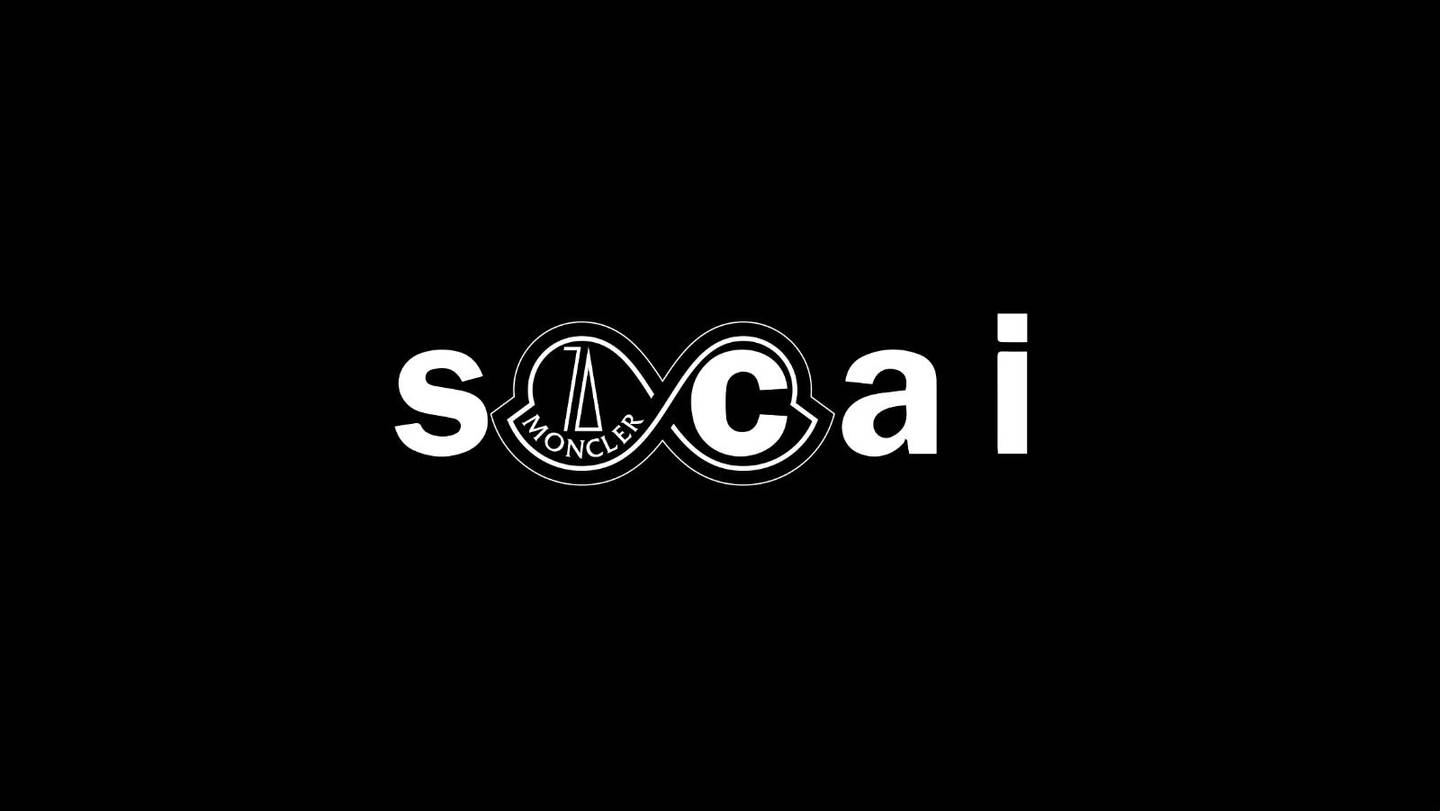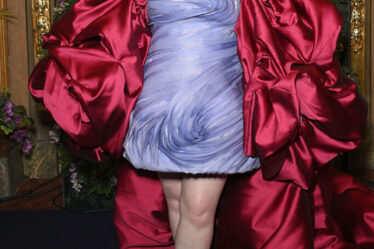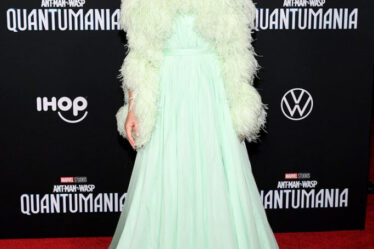
As forward-looking as fashion claims to be, it’s rarely thinking more than a season or two ahead. I’ve certainly never heard any designer talk about seven decades hence. But Chitose Abe isn’t any designer. Like her mentor Rei Kawakubo, Abe, the driving force behind the Japanese label Sacai, has created her own fashion vocabulary, hybridising fashion’s most familiar forms to create designs of a seductively skewed, sci-fi elegance. So it makes perfect sense to me that she can imagine them living on into a distant future, long after she herself has gone.
Remo Ruffini, who acquired Moncler in 2003, clearly felt the same way when he enlisted Abe to help him celebrate the brand’s 70th anniversary. They’d already worked together in 2010 on the Moncler X Sacai project when, as Ruffini sagely observes, “collaborations were not as popular as today, and sometimes they were viewed with a sort of scepticism for the fear of contaminating the ethos of the brand.” But Moncler X Sacai lingered with him as a particularly powerful moment in his company’s evolution, so there was an emotional resonance in bringing Abe back for Moncler’s 70th.
“Extraordinary Forever” was the celebration’s theme and that is, to be fair, why Abe was looking down the pipeline at another 70 years. Think of it as a metaphor for the future. It wasn’t like she jumped out of bed one morning with the 22nd century zapping her synapses. But Ruffini had faith that “forever” actually meant something to her. “Always looking ahead and designing for what is yet to come, Chitose and Sacai’s design mindset mirrors my own because in a way, we are never satisfied with the now and strive to offer something unexpected that will be a catalyst for future creativity.” In other words, what the next 70 years of Moncler might look like.
If that presents itself as a weighty challenge for a billion-dollar brand, the collaboration itself sounds appropriately intense. For starters, there are a mere four looks. In a spirited Google Meet with Abe, her right hand Daisuke Gemma and translator Kaori Funaki who were all in Tokyo, I tried to extract from the transcontinental ether what the essence of a four-look distillation of Sacai’s interpretation of Moncler’s future might be. Ruffini has made his fortune by morphing Moncler’s functional quilted down ski jackets into a broad-based luxury fashion statement. From mountain-top to Michelin restaurant without changing your jacket: that’s a potent transmogrification right there. Add to which the natural Sacai appetite for hybrids and you’ve clearly got a recipe for something. But what?
Gemma offered “transformation” as a clue. “The same garment, but a completely different feeling.” He added, “While we respect what Moncler has been doing, at the same time, what we can bring to the brand is a more creative way of dressing.” Take the normal human response to cold weather, which is layering. “Of course, you can just put everything on top of everything,” Gemma mused, “but we have a little bit more interesting idea of doing layers to create a new silhouette.” To me, a transformation is when a chrysalis becomes a butterfly. There is a notion of emerging. My past experience of Sacai suggests a similar process will be at work here, and the layering will probably be a trick of the eye. But how that will actually work in practical terms clearly needs to be experienced to be fully understood, which means we have to wait until January, when the four designs will debut at Sacai’s men’s show in Paris.
Unseen, they already embody the core of the Sacai philosophy. The Japanese concept of kachikan, the importance of a personal value system, has always been Abe’s motivation, much like her mentor Kawakubo. It has shaped Abe’s past collaborations, most recently with Jean Paul Gaultier and Cartier, even as those collabs also pragmatically represented something that Sacai normally couldn’t do (the fine jewellery aspect of Cartier, for example) or chose not to do. “We don’t make sneakers,” said Gemma. “We work with Nike to make sneakers.” That attitude was, in fact, the basis of Sacai’s original collaboration with Moncler in 2010. “When we first worked with Moncler, it was when we didn’t have a down jacket in the Sacai collection, so that was new for us,” said Abe. “Now, we have a down jacket, so we were thinking what would be new for us. And it was not about the creation, or the technical issues. It was more about being able to work with a powerful company like Moncler on a more focused intellectual project, very edited, very small, but being able to share this intellectual vision together. That was very much the difference from the first collaboration.” And also the point of departure from the other designers who worked on the “Extraordinary Forever” initiative.
Ruffini proposed they re-interpret Moncler’s brand icon, the Maya 70 jacket, for the anniversary. Rick Owens, Pierpaolo Piccioli, Giambattista Valli and Thom Browne were among those who took up his challenge. But Abe’s approach was unique. “The project this time was a heartfelt vision, more about how we express the kachikan than the business side,” she said. “Of course, it needs to be commercial when we are producing something, but this was more about how we respect our culture. More connected with our minds.” And for her, that had a lot to do with the idea of creating something that would endure beyond mere fashion cycles. “Something to be able to feel proud of the future, to be able to coexist in this precious world in a sustainable way.” This is Abe’s kachikan.
It’s coming up to Sacai’s 25th birthday. “We don’t really talk about it,” said Gemma. He claimed the future, not the past, is what absorbs Abe and him, though he had no idea what it might look like yet. Abe insisted they’re very positive. She is driven by a hunger for new perspectives. So far Sacai has a successful track record in satisfying that hunger. The brand’s foundational concept of hybrids, of merging and transformations, tracks fashion’s own evolving ideas about identity, gender, diversity. Did the duo think Sacai has been ahead of its time? “We believe in what we have been doing, we haven’t really changed so much,” said Gemma. “Luckily we had our own signature,” Abe agreed. “For us, being able to create something very unique hasn’t changed, but the society that accepts what we create has changed a lot. In the past it was more exclusive. Now it’s more inclusive.”
Of course, there have been other massive changes. A brand whose very raison d’être is all things snow-related must surely regard a world of rising temperatures with trepidation. It’s no surprise that Moncler’s own commitment to best environmental practice has won wide respect. It’s not something that Sacai, on the other hand, has really talked about. “It’s always a hidden message, you know?,” Gemma said, hesitantly. “All the people we work with, we borrow their voice basically. We don’t say it very loud ourselves but we borrow those people to express our attitude,” suggesting that working with a brand as huge as Moncler is one way for Sacai to acquire an activist voice of its own.
Sacai’s character lends itself to commitment. As curatorially inclined as Japanese fashion so often is, Sacai has taken the magpie impulse to extremes. A random grab-bag of past references includes the master of funk George Clinton, New York club Paradise Garage, cult movie The Big Lebowski… and Albert Einstein! For our interview, Gemma sported a sweatshirt from Sacai’s Tokyo pop-up celebrating new graphic designers and 90s house music. Abe was wearing a T-shirt featuring the singer Sade, guiding light for one of Sacai’s lockdown collections. It poured during that show. The raindrops sparkled like diamonds on the clothes. “Nature is more powerful than anything else,” Gemma murmured.
When I asked Remo Ruffini what his hope for Moncler’s future was, he said, “I wish to see a world where meaningful creativity and innovation remain as powerful as ever, and a place where relationships with communities and powerful experiences will be key to remaining a meaningful brand.” Rooted in these aims, Moncler’s Instagram-savvy Genius strategy, currently on pause, returns in 2023, this time with creatives from arenas beyond fashion offering their interpretations of the brand. But for now, the label has turned to Chitose Abe and Sacai, and the potent promise of four looks. In this case, less is more. Much more.



